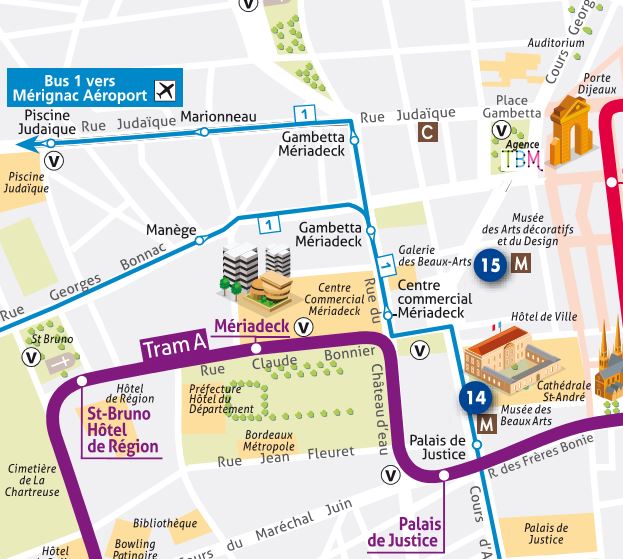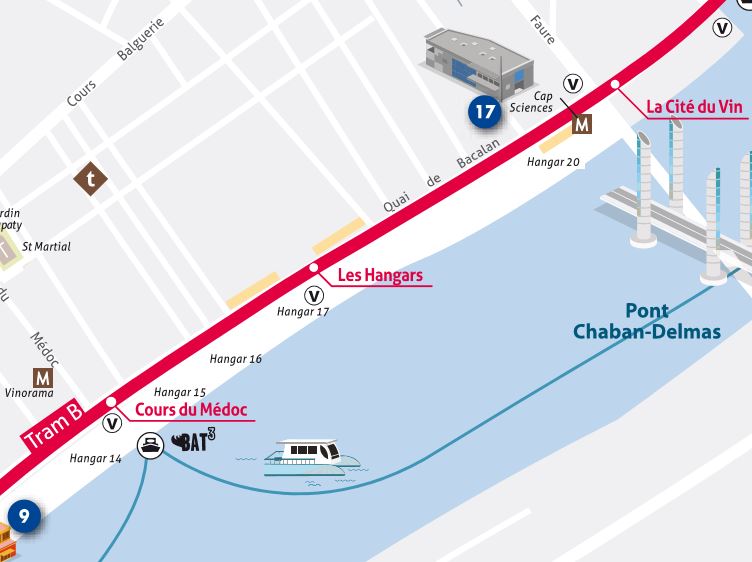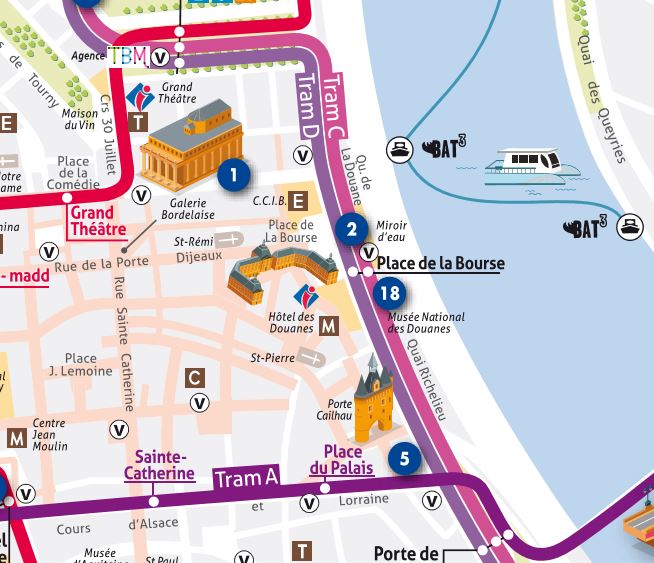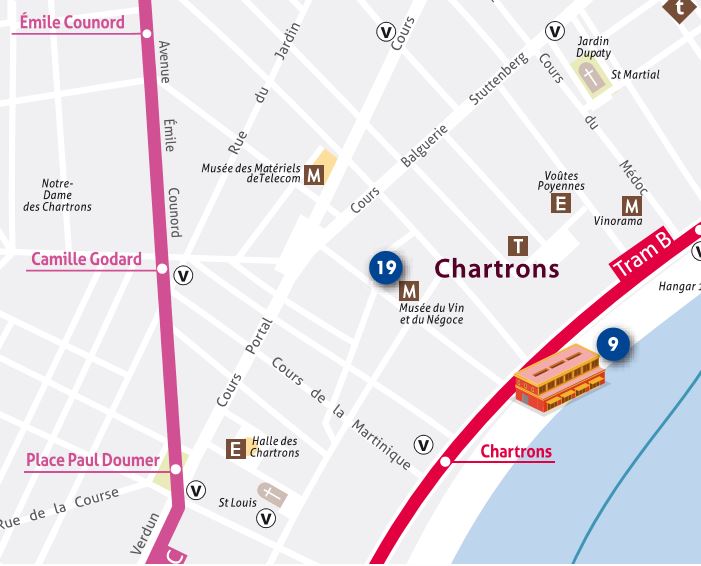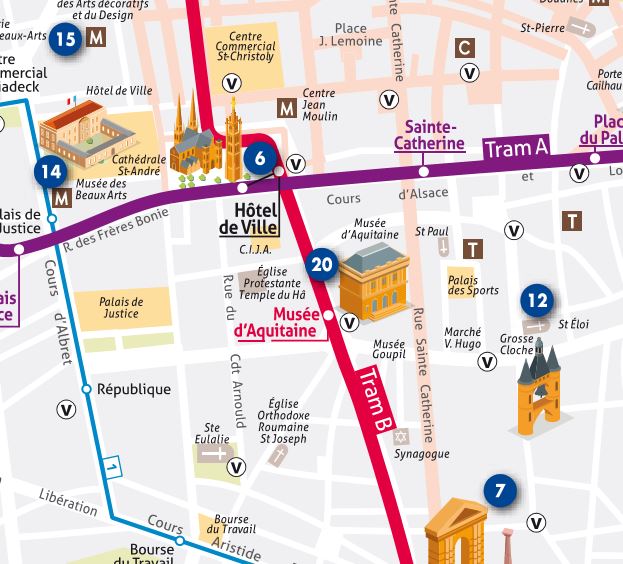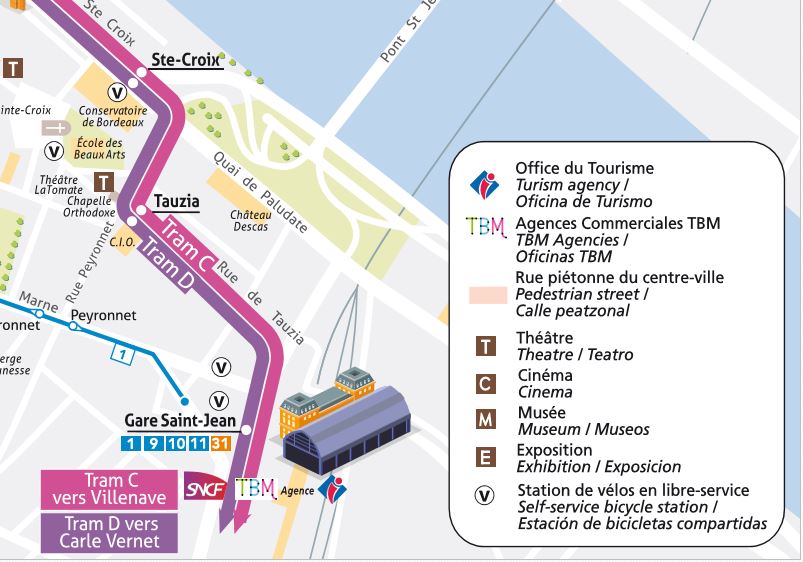© 2020 HyFAR-ARA – Design & development ClictoutDEV – Legal information
The AeroThermoDynamics and Design for Demise (ATD3) Workshop managed by ESA and CNES will take place in Bordeaux from 27 to 28 October 2022. HyFAR-ARA is localy in charge of the Workshop organisation.
Background
Since the launch of the first Sputnik in 1957, more than 6,000 rockets have put into orbit nearly 13 000 satellites, of which about 8000 are still present (active or inert).
A galore of debris adds up to these objects [1]: more than 600 destroyed satellites (explosions, collisions…), launcher stages and various debris (launcher elements, tools…). A total of approximately 36,000 objects larger than 10cm, representing nearly 10,000 tons, are circulating today in Earth’s orbits.
The creation of satellite constellations worth thousands of objects (Starlink…) has made these numbers soar (see figure), with the risk of a rapid saturation of useful orbits as well as an increase in the risks of collisions and debris production.
This ESA video presents the various situations encountered when accounting for a sustainable space exploitation, and the different strategies that are applied in each case.
In brief, the different cases presented in the video are the following :
1. Interstelar spacecraft such as pioneer 10 do not raise any concern regarding space debris or orbits congestions
2. Exploration probes to the farther planets of the solar system (Saturn, Jupiter), at about 600 000 km from Earth, could be a contamination hazard by terrestrial forms of life. To avoid it, they are safely disposed off
3. Most of the satellites that have been launched since the beginning of space exploration were assigned to the rocky planets of the solar system : Mercury, Venus, Earth and Mars). A great majority of them are used in Earth orbits. Mars comes in second (80 000 000 km).
Active probes orbiting Mars can be tracked, but the positions of their now inactive predecessors are poorly known and pose a possible risk to others.
4. The most critical satellites and debris, because they are the most numerous and they orbit in a limited space, are those in Earth orbits. Starting from the most distant orbits to the closest, the strategies adopted by ESA are the following:
-
-
- · The satellites located at the Lagrange points of the Earth-Sun system (distance to Earth of about 1 200 000 km) do not pose particular difficulties, although they are in an area of Space whose demand increases: at the end of their life they can free this area by being moved to a solar orbit from which the risk of return to Earth is almost null (see slides).
- Satellites in very eccentric orbits (up to more than 100 000 km of apogee): orbit maneuvers are applied to make end-of-life satellites re-enter the atmosphere at safe latitudes about two decades later
- Closer to Earth (36 000 km), geostationary satellites are located in very congested orbits. The maneuvers to make these satellites re-enter in Earth’s atmosphere at the end of their life would be too costly. They are therefore moved to “parking” orbits to free up space and avoid the risk of collisions with active satellites. The same strategy is applied to the upper stages of launchers. The sustainability of this strategy raises however questions quite similar to those that arise on low orbits (see next)
- Satellite constellations for terrestrial navigation (about 20 000 km – 25 000 km) are at altitudes that make it very difficult to move them towards parking orbits. Fortunately, to date (2011) no incident (collision or explosion) has ever disturbed the use of this category of orbits
- Low Earth orbits (1000 km to a few thousands km) are those in which both the congestion of satellites in circulation and the accumulation of debris and launch vehicle fragments are most critical: they concentrate two thirds of the objects launched into space from Earth. The situation is even worse since it is in these orbits that mega constellations of satellites such as Starlink have recently been accumulating.
-
To ensure the sustainability of the operations at these low orbits, the control of debris and/or inactive satellites is of utmost importance.
Various actions arepossible :
- When satellites are active, monitor their environment and perform the necessary maneuvers to avoid collisions with drifting debris or other satellites
- Passivation of launchers stages: depleting residual fuel, venting pressure tanks and discharging batteries
- Reduction of the number of inactive satellites to avoid cascading collisions that could hinder the use of these orbits. To this end, a duration of less than 25 years in orbit after the end of the mission is recommended
At these altitudes, the most effective solution to reduce the number of inactive satellitest is to move them towards lower orbits where the increase in the density of the atmosphere will slow them down progressively, and drag them into an atmospheric re-entry during which they will be destroyed
This last phase is critical because most of the time the moment and the position of the beginning of re-entry are not controlled. It is then necessary to master sufficiently well the physical phenomena of re-entry, and the mechanisms of destruction of the satellites and their components, in order to guarantee the absence of risk for the populations with an extremely high probability.
The ATD3 Workshop focuses on the issues that need to be addressed to provide this guarantee:
- mastering the space environment in which the objects in orbit evolve,
- physical and numerical modeling of the atmospheric re-entry of space objects (satellites, launchers…),
- design of satellites allowing to control the destruction process during re-entry.
References
[1] https://www.esa.int/Safety_Security/Space_Debris/Space_debris_by_the_numbers , issue of 4 April 2022
[2] : ESA’S ANNUAL SPACE ENVIRONMENT REPORT – GEN-DB-LOG-00288-OPS-SD – 22 April 2022 https://www.sdo.esoc.esa.int/environment_report/Space_Environment_Report_latest.pdf
The workshop in a nutshell
Workshop overview
The workshop is organized by the Working Group “ATD3” managed by ESA and CNES through the ESA Technology Directorate and the CNES Research and Technology Directorate.
The ATD3 working group is a regular forum at European level to facilitate the discussions (at technical and scientific level), collect and disseminate information, propose new topics/activities and plan (roadmap definition and coordination).
2022 is the XXXth edition of the workshop. Previous editions are :
- To be completed
The main objectives of the working group are:
- Setting of a framework for verification, validation and comparison of numerical methods for space object reentry simulation tools.
- Disseminating recent results within the ATD3 community. Members include academics ( in particular PhD students) and experts from industry
- Coordinating and discussing future activities. The objective is to get expert opinion from the academic and industry sector regarding future activity in the domain of aerothermodynamics and design for demise.
The format is a sequential list of presentations of about 20 minutes each, with 5 minutes brief Q&A session per presentation
Topics
The workshops addresses the issues that are raised by the knowledge of satellites breakup and debris transformations as they enter the Earth atmosphere, the ultimate goal being to predict their survival or total demise before reaching the ground.
The other issue is to determine how fast and how big the remaining debris (if any) will be upon arrival at ground, in order to assess the hazard for populations.
In case the outcome would be an unacceptable risk to the public, the experimental and numerical evidences shall help to improve the design of the spacecraft being assessed.
The workshop is a focus on the experimental data, experimental technics, ground test characterizations, numerical simulations and physical models that are used in this process.
Some exemples of the topics that are addressed in the workshop :
- Wind tunnel and arc jet diagnostics
- Development and experimental assessment of new ground tests facilities
- Study and development of fuse systems to initiate spacecraft demise
- Rebuilding of actual spacecraft reentry and comparison to observations
- Benchmarking of simulation tools
- Arc jet tests experiments on spacecraft components (reaction wheels, optics, structures…)
- Development of physical models and their numerical implementation, tests against experimental results : aerothermodynamics, flight mechanics, structural mechanics, thermal behavior, etc…
- Materials databases
- Demise experiments on ground
- Numerical tools for spacecraft demise modeling
In addition to open presentations, the Workshop proposes a common benchmark to participants. Participants that volunteer for this benchmark send their results to the organization committee. A restitution session is scheduled during the Workshop.
2022 test case is the computation of a two rings configuration tested in one of the Von Karman Institute wind tunnels.
Agenda
Provisional Schedule
Practical information
Fees
The HyFAR-ARA association and the Workshop sponsors take in charge most of the expenses.
What is left on participants budget is :
- Travel from and to their premices
- Lunches: a suggested list of places for lunches will be published here before Workshop starts
- 27th October dinner at Café Maritime for those interested (40€ : to apply see dedicated section in this page)
- Accommodation (see dedicated section in this page)
Venue
Several options are presently under selection process. The venue will be selected at the end of June 2022.
The accommodations that are proposed in the next section have all been picked to be compatible with whatever option will be chosen.
The organizing committee recommends the hotels on accommodations list. Pey Berland is mentioned as this is the location of the venue which is on top of the present short list.
Cap Science is a permanent place of scientific exhibitions close to the Café Maritime where a common dinner at the end of day 1 is proposed (see dedicated section on same page).
All of the addresses are within easy access to the center of Bordeaux. We recommend as early booking as possible.
Should you prefer to book an other hotel, we recommend to choose one that would be not more than 15 to 20 minutes away from the « Pey Berland » station.
More information will be provided once the venue will be definitively selected.
For additional information on public transportation and touristic spots see dedicated section on same page
For those who may be interested, a pre-reservation has been made at Café Maritime restaurant. To get there, take tramway line B and exit at La Cité du Vin station. The Café Maritime is 5 minutes walk away from this station (see situation map).
The fee for the dinner is 40€ per person. If you are interested, please be kind enough to apply early at this address : link towards ESA payment page. This will make the organization committee confirmations to the Café Maritime easier.
Important notice : no reservation may be accepted after date TBD
Touristic spots & public transportation
Tramway plan with touristic spots
1 : Grand Théâtre
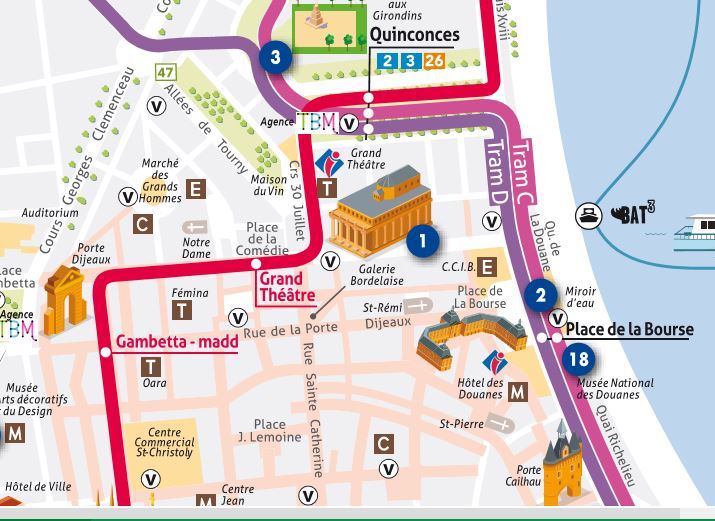
2 : Miroir d’eau

3 : Place des Quinconces

4 : Jardin public

5 : Porte Cailhau

6 : Cathédrale St André et Tour Pey Berland

7 : Place de la Victoire
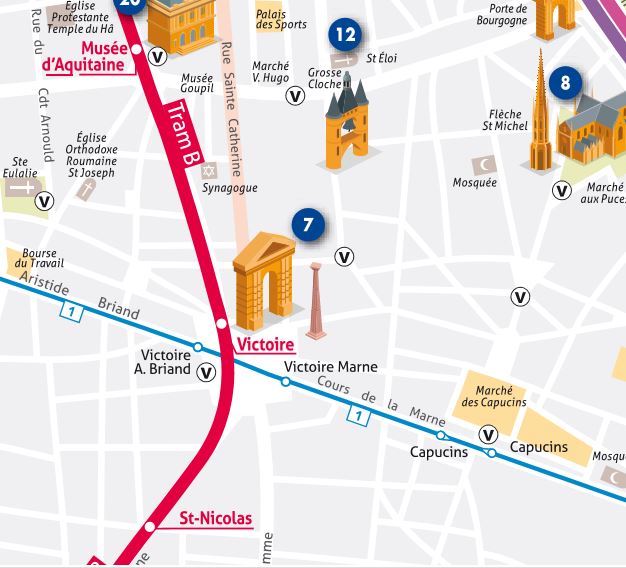
8 : Basilique Saint Michel

9 : Les Hangars – Quai des Marques
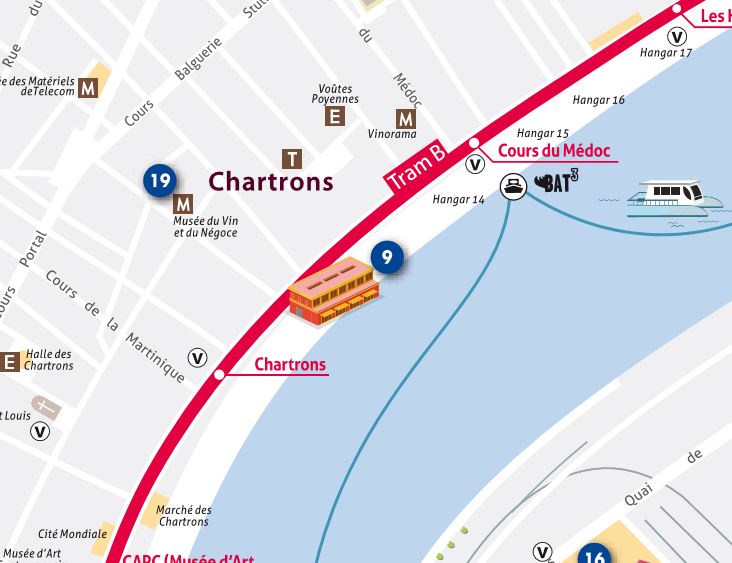
10 : Place Stalingrad – Le Lion bleu de Veilhan
11 : Jardin botanique
12 : La Grosse Cloche
13 : CAPC (Musée d’art contemporain)
14 : Musée des Beaux Arts
15 : Musée des Arts décoratifs
16 : Espace Darwin
17 : Cap Sciences (Hangar 20)
18 : Musée des douanes
19 : Musée du vin et du négoce
20 : Musée d’Aquitaine
21 : Cité du Vin
22 : Map ressources
Contacts and Registration
Link to registration at ESA : TBD
Link to apply for the 27th October 2022 dinner : TBD
Link to HyFAR-ARA organizing committee : TBD





















